Join Over Two Million Spectators at the Hakata Dontaku Festival!
Update-Date: May 1, 2024
Author:
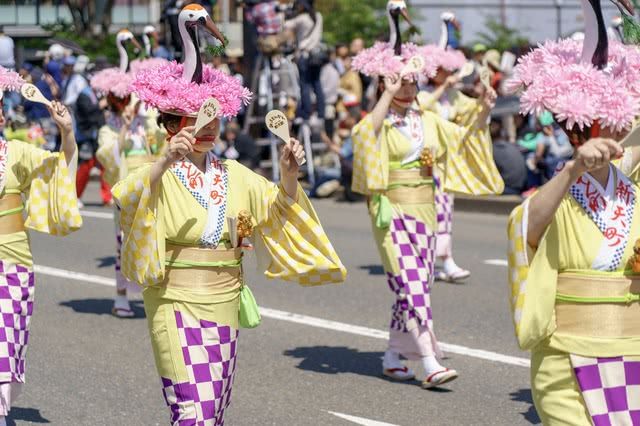
The History of the Hakata Dontaku Festival - A Reflection of Fukuoka's Heart and Soul
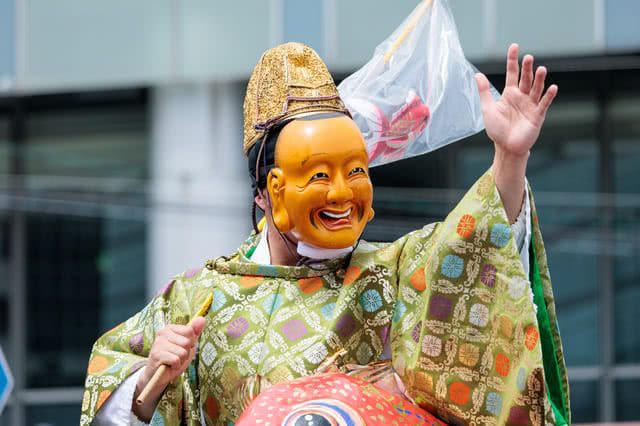
The Hakata Dontaku Festival, whose full name is the Hakata Dontaku Minato Matsuri, is celebrated each year on May 3 and 4 in Fukuoka City, Fukuoka Prefecture. It is one of Japan's largest festivals, bringing in a total of two million spectators.
Dontaku is derived from the Dutch word zontag, which means Sunday or day of rest. The festival dates back 840 years, with roots in Matsubayashi, or Pine Tree Music, which marked the new year by welcoming the Deities of Fortune. During the Hakata Dontaku Festival, the Three Deities of Fortune are paraded through the city on horseback, accompanied by dancing children in ceremonial costumes, to spread blessings throughout the community.
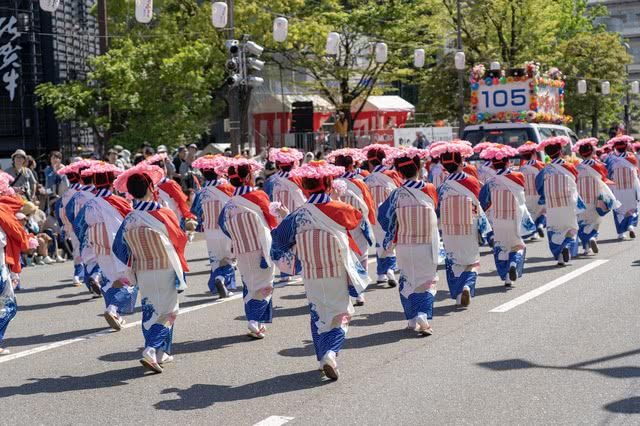
Highlights of the Hakata Dontaku Festival
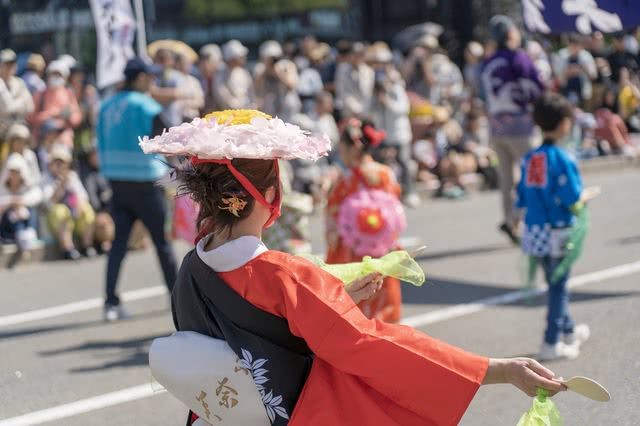
Be sure not to miss the main Dontaku-tai parade, where performers, each dressed in their own unique and vibrant costumes, parade along the 1,270-meter Dontaku Plaza route on Meiji Dori Street, from Gofukumachi Crossing to Tenjin.
You’ll also spot performers holding shamoji (rice scoops) and clapping them together like musical instruments. This unusual tradition is said to have started when a merchant’s wife was cooking as the parade passed, and was so enraptured that she joined the festival with a rice scoop still in hand!
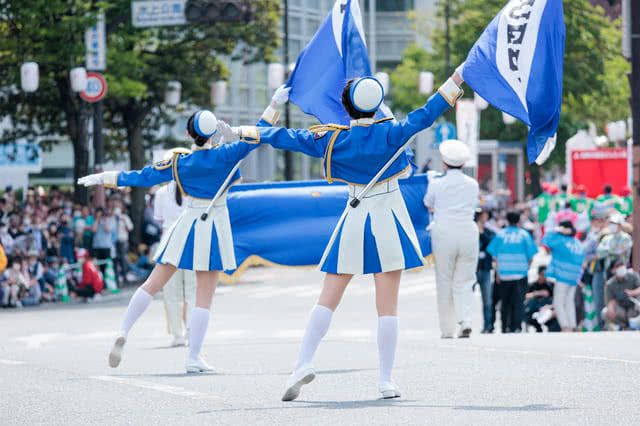
Maximizing Your Time at the Hakata Dontaku Festival
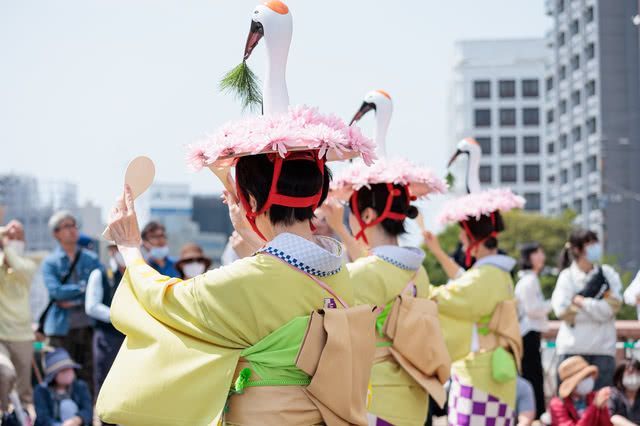
The official website offers machine translations in English, Traditional Chinese, Simplified Chinese, and Korean.
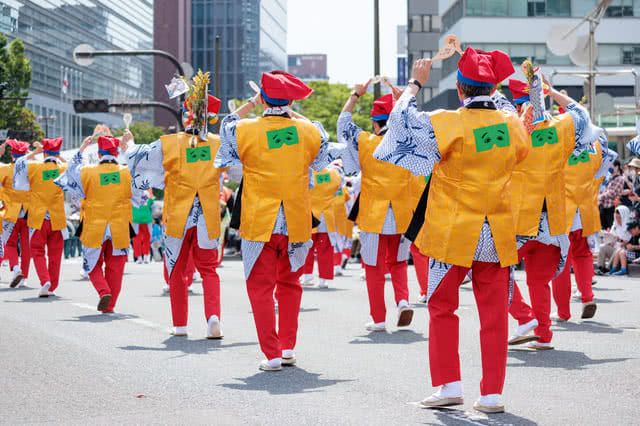
The dance is slow and easy to follow, and professionals will demonstrate it at Dontaku Plaza and other key locations prior to starting, making it a breeze to learn on the spot. Once you’re in the circle, let yourself go to the rhythm and tap along with a rice scoop if you have one!
The Best Places to Enjoy Motsunabe - Fukuoka City’s Local Specialty
This popular hotpot contains beef offal simmered in a flavorful broth of soy sauce or miso and enriched with garlic, garlic chives, and cabbage.
Below are two recommended motsunabe restaurants conveniently located near the Hakata Dontaku Festival!
Hakata Motsunabe Yamanaka Main Branch (Ohashi)
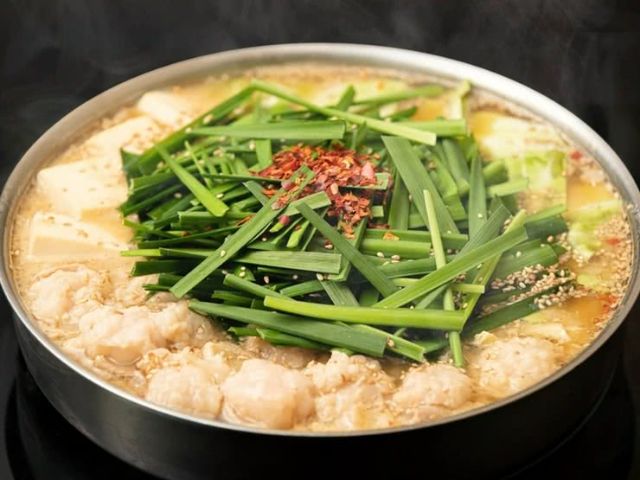
While miso-based broth is common today, back when the restaurant first opened, motsunabe was typically seasoned with soy sauce. This restaurant pioneered a new broth made with a unique blend of several types of miso, kick-starting a now-standard trend.
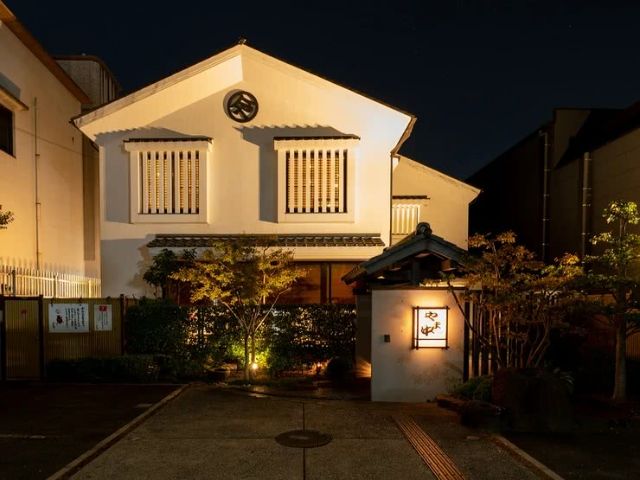
The restaurant is also distinguished by its impressive facade of a traditional Japanese warehouse. Inside, the spacious interior contains Japanese tatami floor tables, presenting a tranquil ambiance reminiscent of tea rooms and Japanese-style inns.
Hakata Motsunabe Yamanaka Main Branch
Closed: Tuesday
Average price: [Dinner] 5,000 JPY
Access: Approximately 10 minutes walk from Ohashi Station on the Nishitetsu Omuta Line, and 15 minutes walk from Takeshita Station on the JR Kagoshima Main Line
Address: 2-2-12, Mukaino, Minami-ku, Fukuoka-shi, Fukuoka Map
More Details Reservation
Hakata Motsunabe and Horse Sashimi Yuzu Motsunabe Matsuba (Yakuin Odori)
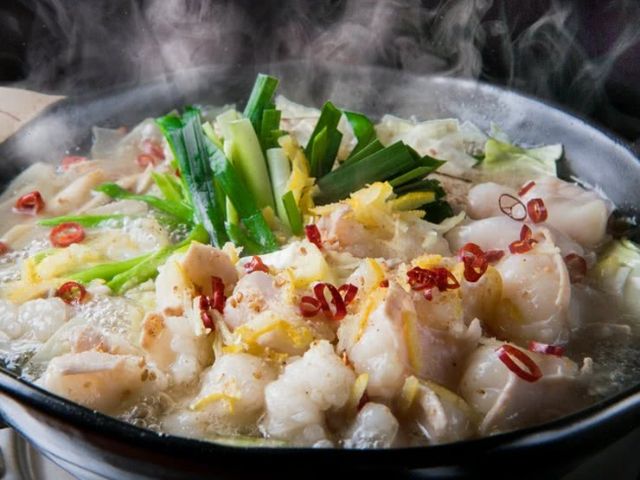
Plus, instead of the typical finishing dish of champon/udon noodles or rice, you can opt for [Vietnamese Pho] (380 JPY). These rice noodles are a perfect match for the fragrant yuzu-flavored motsunabe broth.
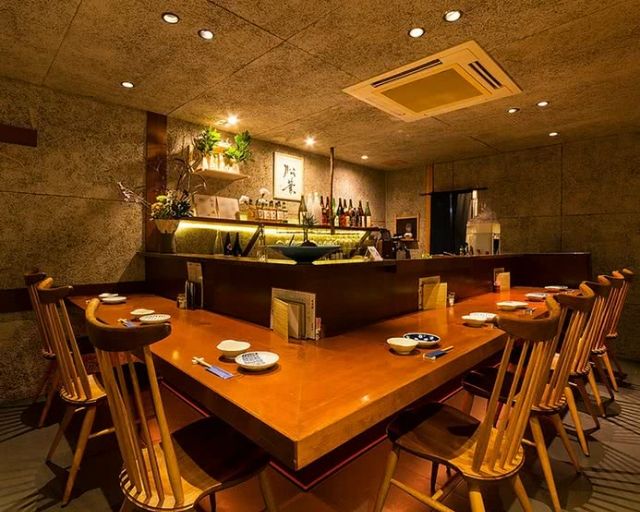
Hakata Motsunabe and Horse Sashimi Yuzu Motsunabe Matsuba
Closed: Wednesday
Average price: [Dinner] 5,000 JPY / [Lunch] 5,000 JPY
Access: 3-minute walk from Yakuin-odori Station on the Fukuoka City Subway Nanakuma Line, or an 8-minute walk from Yakuin Station on the Nishitetsu Tenjin Omuta Line.
Address: 102, Estate More Josui-dori, 4-18-5, Yakuin, Chuo-ku, Fukuoka-shi, Fukuoka Map
More Details Reservation
Disclaimer: All information is accurate at time of publication.
Thank you for reading our article.
Our goal is to take your culinary journey to the next level by helping you find the best restaurant. With SAVOR JAPAN, you can search and make reservations for
the restaurants found in and around Fukuoka and Hakata that fill your needs.
Discover more restaurants by area
Keywords
Update-Date: May 1, 2024
Author:
Related Articles
New Articles
Categories
Cuisine
- Bars (21)
-
Japanese Cuisine (649)
- Kaiseki (42)
- Nabe (19)
- Okonomiyaki (18)
- Shabu Shabu (32)
- Soba (17)
- Sushi (129)
- Tempura (17)
- Teppanyaki (45)
- Shojin Ryori (2)
- Tonkatsu (10)
- Kushiyaki (10)
- Yakitori (41)
- Sukiyaki (33)
- Japanese Cuisine (335)
- Oyster (2)
- Sashimi/ Seafood (16)
- Unagi (eel) (30)
- Motsu Nabe (offal hotpot) (6)
- Mizutaki (chicken hot pot) (3)
- Oden (4)
- Kaisendon (seafood bowl) (6)
- Udon (2)
- Taverns(Izakaya) Cuisine (117)
- Western Cuisine (39)
- Italian/French Cuisine (91)
- Yakiniku/Steak (217)
- Chinese Cuisine (21)
- Ramen (Noodles) Cuisine (20)
- Cafe/Sweets (53)
- Other Asian Cuisine (5)
- Global/International Cuisine (7)
- Alcohol (42)
- Other (10)
Area
- Shikoku (10)
- Kyoto and Osaka (341)
-
Tokyo (432)
- Tokyo (263)
- Ginza (39)
- Roppongi (21)
- Shibuya (22)
- Shinjuku (41)
- Asakusa (19)
- Ebisu (10)
- Tsukiji (10)
- Tokyo Landmarks (3)
- Ueno (21)
- Akihabara (9)
- Ikebukuro (11)
- Jiyugaoka, Denenchofu, Nakameguro (9)
- Shimokitazawa (3)
- Kichijoji (3)
- Tachikawa (1)
- Omotesando, Harajuku, Aoyama (17)
- Akabane (1)
- Kagurazaka (4)
- Akasaka (8)
- Odaiba (1)
- Tsukishima, Harumi, Toyosu (3)
- Near Tokyo (97)
- Okinawa and Southeast Islands (58)
- Hokkaido (119)
- Northern Honshu (Tohoku) (31)
- Central Honshu (Chubu) (141)
- Western Honshu (Chugoku) (32)
- Kyushu (92)
Archives
- June 2025(18)
- May 2025(34)
- April 2025(43)
- March 2025(30)
- February 2025(36)
- January 2025(26)
- December 2024(69)
- November 2024(31)
- October 2024(15)
- September 2024(39)
- August 2024(65)
- July 2024(31)
- June 2024(54)
- May 2024(61)
- April 2024(28)
- March 2024(31)
- February 2024(42)
- January 2024(32)
- December 2023(20)
- November 2023(5)
- October 2023(11)
- September 2023(7)
- August 2023(18)
- July 2023(8)
- June 2023(8)
- May 2023(18)
- April 2023(15)
- March 2023(1)
- January 2023(1)
- April 2022(2)
- March 2022(2)
- February 2022(1)
- January 2022(1)
- July 2021(1)
- March 2021(1)
- February 2021(1)
- December 2020(1)
- October 2020(1)
- September 2020(2)
- August 2020(10)
- July 2020(6)
- June 2020(9)
- May 2020(11)
- April 2020(8)
- March 2020(8)
- February 2020(13)
- January 2020(9)
- December 2019(24)
- November 2019(8)
- August 2019(14)
- July 2019(15)
- June 2019(18)
- May 2019(17)
- April 2019(16)
- March 2019(22)
- February 2019(22)
- January 2019(26)
- December 2018(34)
- November 2018(40)
- October 2018(32)
- September 2018(11)
- August 2018(8)
- July 2018(6)
- June 2018(9)
- May 2018(10)
- April 2018(21)
- March 2018(74)
- February 2018(39)
- January 2018(26)
- December 2017(60)
Keywords
- Omakase
- Accessible
- Affordable
- All-You-Can-Eat
- Amazing Scenery
- anime
- Art
- Autumn
- Awards
- Beer Gardens
- Breakfast
- Chef Recommendations
- Cherry Blossoms
- Chinese
- Close To Station
- Condiments
- Counter
- Coupon
- Crab
- Culture
- Dassai
- Dates
- delivery
- Early Summer
- Editor's Recommendation
- English Available
- Event
- Expo
- Fall Leaves
- Family-Friendly
- Famous Restaurant
- Famous Tourist Spot
- Fast Food
- festival
- fireworks
- Flower Farm
- Free Wi-Fi
- French
- Great Location
- Guide
- Hibachi
- hotpot
- How To
- hydrangea
- Hygiene
- Illumination
- Italian
- Izakaya
- Japanese
- Japanese alcohol
- jingisukan
- Kaiseki
- Kappo
- Kushiage
- Kushikatsu
- Kyoto
- Late-Night
- Lunch
- Manners
- matsusakagyu
- Michelin
- mizutaki
- Model Course
- monjayaki
- motsunabe
- Mt.Fuji
- Multilingual Menus
- Nabe
- Narita Airport
- New Year
- Ninja
- Noodle
- Oden
- Okonomiyaki
- omotenashi
- Onsen
- Osaka
- Osaka Station
- Photogenic Site
- pizza
- PR
- Private Room
- Ramen
- ranking
- Recipe
- Regional Cuisine
- Resort
- Rice Bowl Dish (Donburi)
- sacred places
- Sake
- Sakura
- Sashimi
- sea urchin
- Setouchi Area
- Shabu Shabu
- sightseeing
- Signature Dish
- Soba
- Solo Diners Welcomed
- Spicy Food
- Spring
- Steak
- Summer
- Sunflower
- Sushi
- Takashimaya
- takeout
- Teppanyaki
- Terrace Seating
- Tokyo
- Tokyo Skytree
- Tokyo Tower
- unagi
- UNESCO
- Vegan
- Vegetarian
- Wagyu
- What Popular Gourmet Sites Recommend
- Whisky
- Wine Bar
- Winter
- Wisteria
- Workshop
- World Heritage Site
- Yakiniku
- Yoshoku
- Yuba
- Zen
Discover Restaurants By Area
-

Tokyo Area
Japan's largest city, Tokyo, is the center of culinary culture in Japan. Countless Tokyo restaurants serve every kind of food imaginable and the Toyosu fish market keeps restaurants stocked with the nation's finest fish.
-

Near Tokyo
Coastal areas, mountains and valleys surrounding Tokyo are bursting with tourist destinations, such as hot springs and ski slopes, where many unique foods are only available locally.
-

Kyoto and Osaka Area
The cities of Kyoto and Osaka, together with their surrounding areas, have greatly influenced Japan's culinary culture since the 7th Century. The region is renowned for its entertainment, Kobe beef, and wide-ranging traditional dishes.
-

Hokkaido Area
The island of Hokkaido is home to wide-ranging produce of the finest quality, such as rice, meat, vegetables, fish and fruit. Popular dishes from Hokkaido include robatayaki (food slowly roasted on skewers) and Sapporo miso ramen.
-

Northern Honshu (Tohoku)
The northern end of Japan's main island, Honshu, is renowned for its seasonal fruit and vegetables, nation-leading harvest of fish (especially tuna from Ohma), and delicious beef from Yonezawa, Sendai and Yamagata.
-

Central Honshu (Chubu)
Chubu is in the center of Japan's main island, Honshu, and its culinary culture reflects its position between Japan's western and eastern halves. Delicious Hida beef, world-famous Mount Fuji and many acclaimed sake breweries are in Chubu.
-

Western Honshu (Chugoku)
Chugoku, on the southwest of Japan's main island, is rich with diverse produce. Many of its products are praised as Japan's best, including Matsuba crabs from Tottori and oysters from Hiroshima. Its pears and muscats are also top grade.
-

Shikoku
The mild climate of Shikoku is ideal for growing citrus fruit such as sudachi. Shikoku is also famous for Sanuki udon noodles, huge yields of tiger prawn from Ehime Prefecture and the best torafugu (tiger globefish) in the country.
-

Kyushu
Western culture was first introduced to Japan through Kyushu, Japan's third largest island, where the influence of Portuguese and other western cuisine influenced the creation of a colorful culinary tradition.
-

Okinawa and Southeast Islands
Okinawa, Japan’s southernmost prefecture, is a treasure trove of distinctive dishes and drinks that have become popular throughout Japan, including Okinawa soba, unique sushi toppings and Awamori distilled liquor.
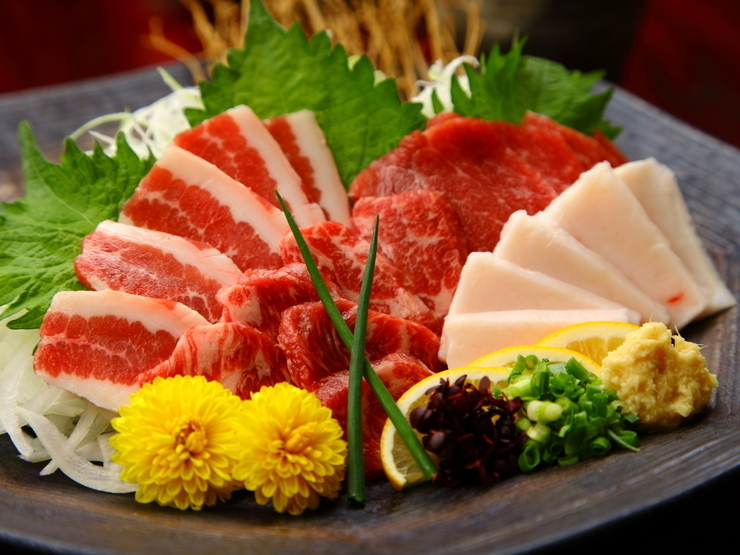
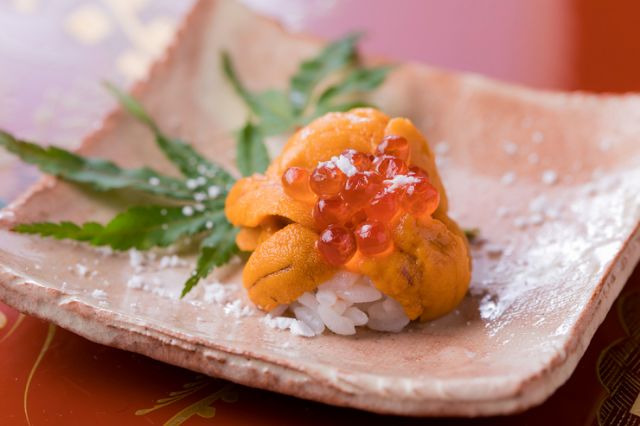
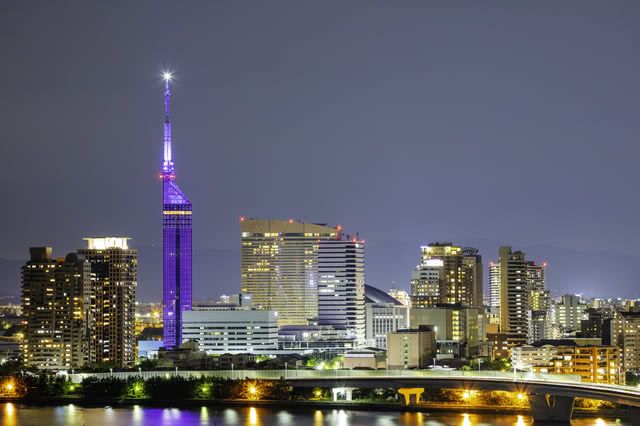
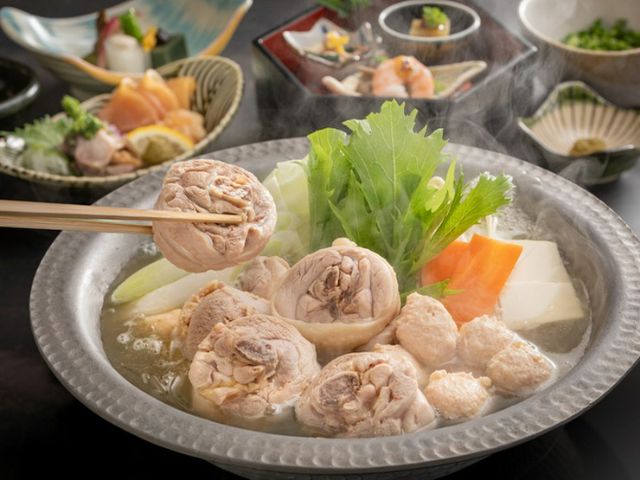
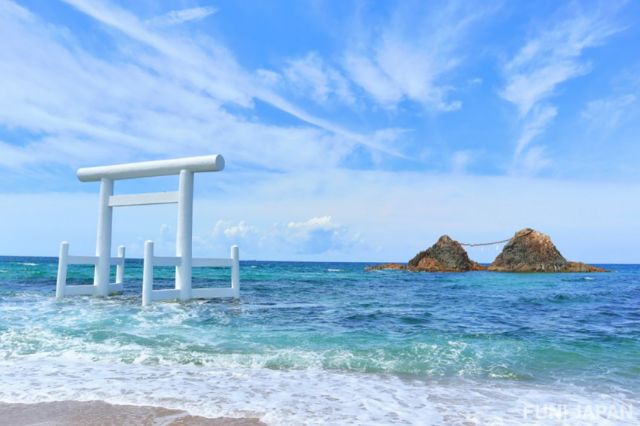


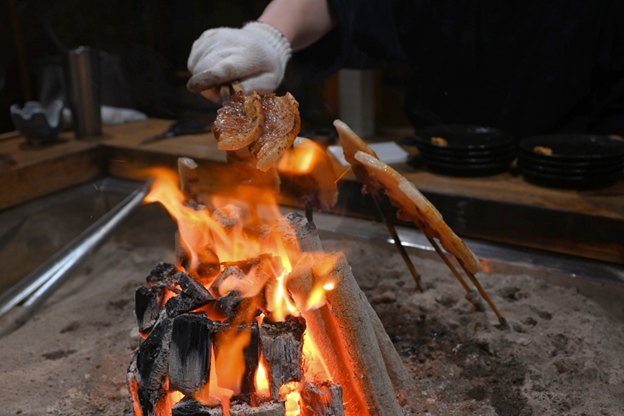
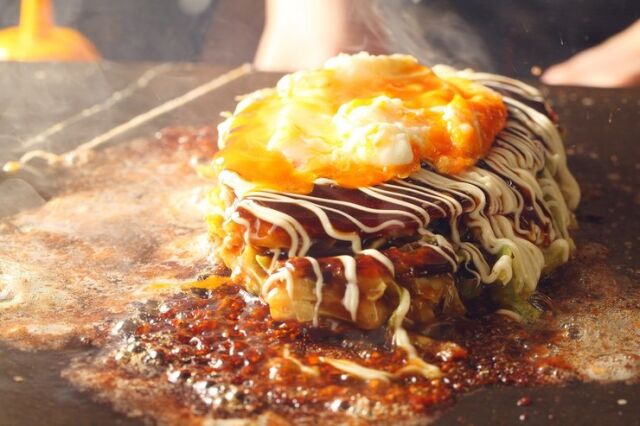
![Azabudai Hills [SUMI] (Janu Tokyo) ~ Editor's Afterword by the Editor-in-Chief of Japan's Gourmet Site "Hitosara"](https://rimage.savorjapan.com/svj/image/discover_oishii_japan/6536/article_head_150x105z.jpg?t=1750244602)